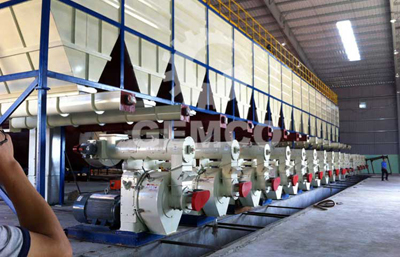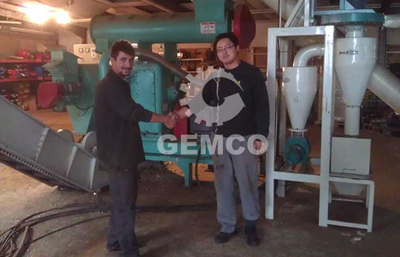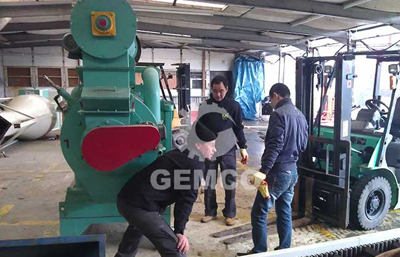How to Choose A Pellet Mill
There is no doubt that energy plays a vital role in human social life. With the development of society and economy, human’s life pace is faster and faster, consequently, human’s demand for energy is gradually increasing. Nowadays, though petroleum, coal, natural gas and other fossil energy is still the main force of energy, the problems of environmental pollution caused by them is increasingly conspicuous. The influence of industrial pollution, garbage, and automobile exhaust pollution on ecology, environment and human health is terrible and increasing. Meanwhile, as nonrenewable energy, the fossil fuel has caused people’s more and more concern on energy crisis. Since twenty-first Century, because of the urgent need of environmental protection and concern on energy crisis, people try more efforts to search for green renewable energy to replace the traditional fossil energy. Countries all over the world have done a lot of research and trial to explore new energy.
GEMCO Pellet Mill Factory
 Biomass energy makes usable clean energy from sawdust, biomass waste and even garbage, etc. Biomass energy has become one of the most important fields that people explore thanks to their clean and renewable. GEMCO (Anyang GEMCO Machinery Co., Ltd) is the earliest enterprise engaged in biomass machinery researching and development. With more than two decades of research, continuous development, more and more machines, and increasingly advanced technology, GEMCO Machinery has become one of the world’s four most famous biomass machinery suppliers (the other three are: American CPM, Germany KAHL, Sweden Andruzzi). Besides, GEMCO is a leading manufacturer and supplier of biomass processing machinery in China.
Biomass energy makes usable clean energy from sawdust, biomass waste and even garbage, etc. Biomass energy has become one of the most important fields that people explore thanks to their clean and renewable. GEMCO (Anyang GEMCO Machinery Co., Ltd) is the earliest enterprise engaged in biomass machinery researching and development. With more than two decades of research, continuous development, more and more machines, and increasingly advanced technology, GEMCO Machinery has become one of the world’s four most famous biomass machinery suppliers (the other three are: American CPM, Germany KAHL, Sweden Andruzzi). Besides, GEMCO is a leading manufacturer and supplier of biomass processing machinery in China.
GEMCO Pellet Mills
The core product of GEMCO is flat die pellet mill. In 1992, GEMCO was engaged in the research and manufacturing of pellet mills. In earlier times, pellet mills were used to make animals’ feed. GEMCO was the first manufacture that had brought feed pellet mill into the biomass field. Though the working theories of making biomass pellets and feed pellets are familiar, biomass pellets’ adhesion is poor, as biomass materials contain containing lignin, cellulose, and crude fiber, etc. However, the raw materials for feed pellets are mostly the mixtures of different grains, which have strong viscosity. Compared with feed pellet mill, biomass pellet mill has heavier load and higher demand for mechanical transmission efficiency and mechanical strength. Consequently, biomass pellet mill needs larger consumption of power.
According to the characteristics of biomass materials, GEMCO machinery has made improvement and innovation based on the feed pellet mill. GEMCO biomass pellet mill has upgraded in structure, transmission, power, electrical control, spare parts’ material selection, machining, heat treatment process, lubrication and maintenance, etc., which makes pellet mill more suitable for making biomass pellets. GEMCO’s products are designed for markets only after they are improved via hundreds of tests. Nowadays, there are too many pellet mill manufacturers in Chinese market, and the competition is intense. However, the quality of these pellets making machines varies dramatically, from pretty good to terribly bad. Some manufacturers only pursue benefits, without consideration about the machine’s efficiency, reliability or exaggerated publicity. What’s worse, some of them even attract customers by low investment and low cost. Therefore, you couldn’t be more careful to make the right choice when buying the pellet mill. As a professional manufacturer, we have the obligation to help customers to choose the most suitable pellet mill.
How to Choose A Pellet Mill?
Before buying the pellet mill, you have to know very well of your purpose. If you are the one who use it, then you need to have a good knowledge of your raw materials. Different from other machinery, pellet mill is not almighty, which means that a pellet mill cannot process all the materials. Different pellet mills are for processing different materials, for example, feed pellet mill and sawdust pellet mill are different, and pellet mills for processing plastic and graphite are also different. Even if the pellet mills are all for processing sawdust, they have different moulds and compression ratio because of different raw materials that contain different lignin and cellulose. Even the raw materials are the same, the moulds of pellet mills also vary greatly because of different moisture content and final pellets’ diameter. Besides, even as the raw materials, the moisture content, the diameter of pellets are the same, the moulds of pellet mills vary according to the shape and density of pellets. In addition, pellets’ usage also affects your choice. If you are a seller of pellets, you certainly demand pellets have good shape and smooth surface. If your pellets are for your own usage, you don’t need to worry about pellets’ appearance. Therefore, as terminal clients, you should know the character, moisture content, diameter, and usage of the pellets made by yourself, for these are the basic factors to choose a pellet mill. If you’re not sure about these, you can contact our salesmen, and we will offer you the most professional help.
Then, make your demand for pellets output capacity clear. The capacity is mainly related with the machine’s size. Larger capacity needs bigger size and higher power. Except machine’s size, you also need to consider your power condition and using place. If the machine is used in the fixed area that has power, electric motor pellet mill is suggested; if in field without power, diesel pellet mill or PTO pellet mill is recommended. No matter which kind of pellet mill is used, you should consider whether the dynamic configuration can satisfy the use requirement of the machine. For instance, if electric motor pellet mill is used, can the machine use three-phrase electric? Can the wire bear the machine’s maximum power? Is the electrical condition safe?
As a terminal user, the most important thing before buying a pellet mill is analyzing economic benefit. Whether making feed pellets, biomass pellets, or other pellets, economic benefit analysis is necessary, or if the wrong choice is made, lose will happen is later use. Calculating the benefit of making pellets mainly depends on pellets’ selling price, production cost, packaging and transporting cost. If the selling amount is higher than the investment, the right pellet mill has been chosen. If not, it proves that you have chosen the wrong one. The investment is related to the cost of power, labor, raw material and moulds.
We receive enquiries in English, Español (Spanish), Русский язык (Russian), Français (French) and العربية (Arabic). Our professional team will reply to you within one business day. Please feel free to contact us!




